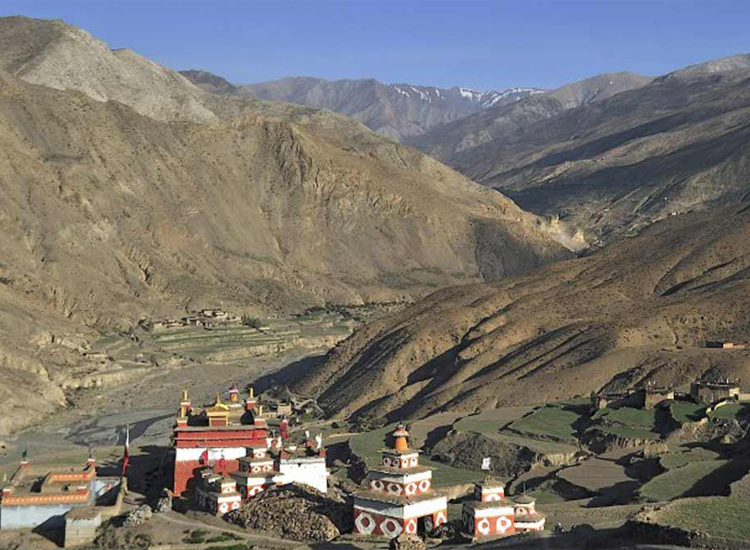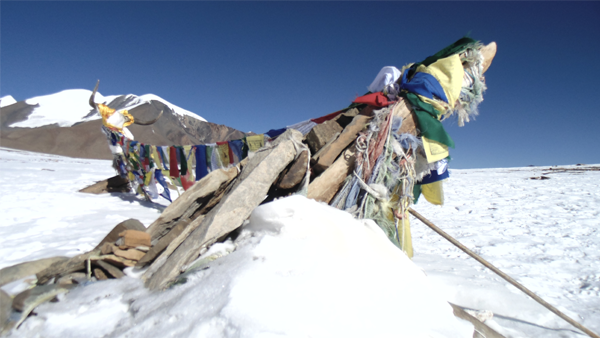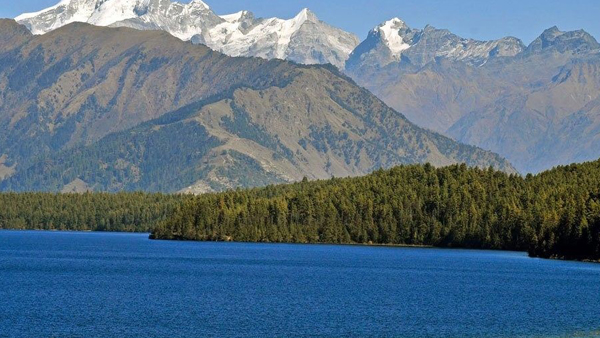Lower Dolpa Trek is one of our favorite treks and we’d be delighted to help you explore this remarkable region in Nepal
Dolpa is a remote, wild and considered by many to be one of the most magical and mysterious places in the Himalaya. East and south are bounded by the huge Dhaulagiri and Churen Himal ranges to the west by Jumla district and isolated from the rest of Nepal by high passes to the south.
Lower Dolpa Trek offers the hidden treasure and the real adventure trekking experience on remote and rugged natural Himalayan valleys across western Nepal. Trekking to Lower Dolpo makes you the remarkable and worthwhile experience of a lifetime. We will get to observe the snowy peaks, ancient and isolated villages, rich wildlife, Buddhist monastery and wonderful lakes. The people of this area are simple and warm-hearted with enthralling culture and traditions. Lower Dolpo is natural and cultural blessed with the region; offers the stunning landscapes of Trans-Himalayan Mountain, Tibetan Buddhist, and Bonpo culture, unrivaled beauty, turquoise tinted Phoksundo Lake, spectacular mountain peaks, high passes and a real sense of being in the wilderness. The cultural traditions of this area are basically linked with Tibet. Trekking into this region gives an exposure to the High and Isolated Himalayan valleys, resembling the Tibetan highlands. The major highlight of this trek includes Shey-Phoksundo National Park, largest National Park of Nepal. Shey-Phoksundo Lake is another highlight of this region. The lake is totally free of aqua life, which the crystal waters clearly explain. Surrounded by rock, forests, and snow-capped peaks, the area has been described as one of the World's Natural Hidden Wonders. Numa La Pass and Baga La Pass are challenging passes from where the excellent views of Dhaulagiri range, Nilgiri, KyangyuRipa, Annapurna range, and many other mountains can be seen.
Our 17 days Lower Dolpa Trek starts from a vibrant capital city and a scenic flight to Nepalgunj to Juphal and treks to Dunai through remote locations admiring the beautiful and magnificent rain shadow landscape of the Himalayas. The trail passes through Shey-Phoksundo National Park where we see the crystal blue deep Shey- Phoksundo lakes before joining ancient Nepal-Tibet trade route and enjoy the great views of lower Dolpa valley. The lake is totally free of aqua life and is surrounded by rock, green forests, and snow-capped peaks. This area has been described as one of the World’s Natural Hidden Wonders. We discover the yak caravans that still maintains the ancient salt trade route to Tibet. The trek reflected in the colorful barren slopes of the mountains where the play of lights and shadow is a perpetual fascinating spectacle. This is one of the few areas where the pre-Buddhist Bon Po religion is still practiced by the local communities. During our trek, we cross the two high passes namely – Numa La and Baga La. From those two passes, we observe the excellent views of Dhaulagiri range, Nilgiri, Kyangyu Ripa, Annapurna range and many other snowy mountains.
Enroute we pass Tarakot, Laina, Nawarpani to reach Dho Tarap. Dho Tarap is an ancient village where people follow the century’s old traditions and customs. Leaving Dho Tarap we traverse two high passes and enjoy the panoramic views of Dhaulagiri, Shey Shikhar and Tibetan peaks named Kugung La and Khyung La. After crossing these passes we descend all the way to Phoksundo Lake passing meadow and waterfall in the route. Ringmo village, the Bon settlement, near to Phoksundo Lake is rich in Buddhist and Bon Po culture. Excursions to the ancient monasteries (gompas) and Bonpo shrines surrounding the lake make this trip more worthwhile. From Phoksundo Lake we return back to Juphal following Chepka.
We always try to keep our guests happy and satisfied, therefore we manage well-behaving friendly human resources, with the best cook, serving tasty foods to our valuable guests. We are waiting for you to join us for such an exciting and unforgettable trip.
Highlights
- Explore the hidden land of Dolpo, with it’s untouched Tibetan Buddhism and Bonpo culture
- Stunning landscapes of the Trans Himalayan mountains
- Admire the incomparable beauty of the holy Phoksundo Lake, with its enchanting blue and emerald colors
- Cross three high passes with the stunning views over the snowcapped Himalayas
Price
2190/ PaxDuration
Season
Region
Grade
Altitude
Walking
Accommodation
Trip Type
Transportation

Certificate of Excellence
Based of services & reviewTrek Map
Need More help ?
Talk to our travel experts by phone, email, WhatsApp/Viber, WeChat! We love to talk travel ! We're here to help and happy to assist you with your booking and make your dream come true.

Mr. Tsering D. Sherpa
(National Mountain Leader)
Mountaineering, Treks & Tours
- +977-9862258888
(WhatsApp,Viber)7/24 - mytrek2@gmail.com
info@himalayansherpaadventure.com





